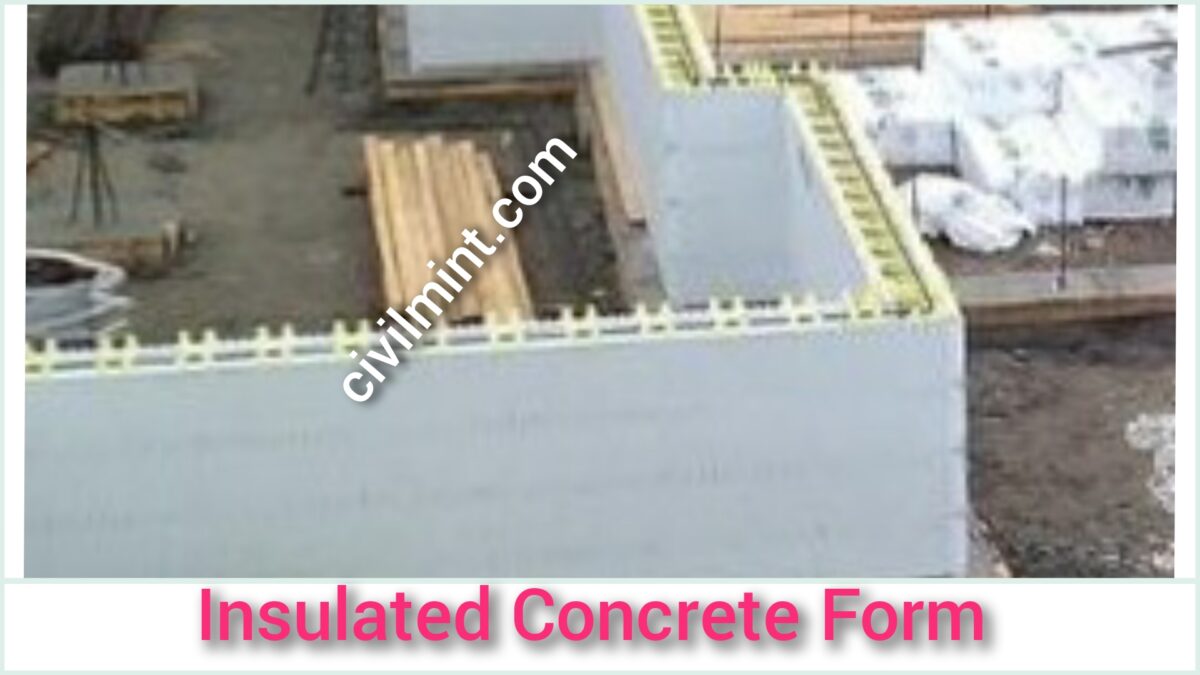Insulated concrete form is an innovative building material. It is also known as insulating concrete form. This article fully explains about insulated concrete form, its advantages, and disadvantages and of their applications.

Table of Contents
What Is Insulated Concrete Form?
Insulated concrete form is a type of building system that integrates the strength of concrete with the insulating properties of foam insulation. This system of construction has gained popularity in recent years due to its energy efficiency, durability, and ease of use.
What are Insulated Concrete Forms?
Interlocking foam blocks are used to construct Insulated Concrete Forms that are filled with concrete, providing insulation and structure.
The blocks, typically made of expanded polystyrene (EPS) foam, are interlocked using plastic connectors that create a continuous formwork. This formwork holds the concrete in place while it sets.
Once the concrete has cured, the foam blocks remain in place, providing insulation for the building. Insulated concrete forms can be used for a variety of building types, including residential homes, commercial buildings, and even multi-story structures. They can be used for walls, floors, roofs, and other structural elements.
Advantages And Disadvantages Of Insulated Concrete Form
Advantages
There are several benefits of insulated concrete forms:
- Insulated concrete forms provide excellent insulation, which can help reduce energy costs by up to 50% compared to traditional construction methods.
- Insulated concrete forms are strong and durable, withstanding extreme weather conditions such as hurricanes, tornadoes, and earthquakes.
- The thick walls of insulated concrete forms provide excellent soundproofing, making them ideal for buildings located in noisy areas.Insulated concrete forms are made from recycled materials and can be recycled at the end of their useful life, making them sustainable.
- Insulated concrete forms are easy to install, reducing construction time and labor costs.
Disadvantages
Some disadvantages of insulated concrete form are listed below:
- Insulated concrete forms can be more expensive than traditional construction methods, which makes them less accessible for some builders.
- The foam blocks used in insulated concrete forms are pre-made and cannot be easily customized, which limits the design options.
- Insulated concrete form installation requires specialized equipment and experienced installers, which can add to the overall cost of construction.
Applications of Insulated Concrete Forms
Here are some uses of insulating form concrete:
- Insulated Concrete Forms are ideal for residential homes, as they provide excellent insulation and soundproofing and can withstand extreme weather conditions. People use Insulated Concrete Forms for residential homes.
- Insulated Concrete Forms are also used for commercial buildings, as they can reduce energy costs and provide soundproofing in noisy environments. People use Insulated Concrete Forms for commercial buildings.
- Insulated Concrete Forms can also be used for multi-story structures, as they provide the necessary strength and durability to support the weight of the building. People use Insulated Concrete Forms for multi-story structures.
Summing Up
Insulated Concrete Forms combine the strength of concrete with the insulating properties of foam insulation to create a modern construction system that provides many benefits, including energy efficiency, durability, soundproofing, and sustainability.
Insulated concrete forms have some drawbacks, including cost and limited design options, but they are suitable for a wide range of building types, including residential homes, commercial buildings, and multi-story structures.
It is important to carefully consider the benefits and drawbacks of insulated concrete form before deciding if they are the right choice for your project, as with any construction method.
